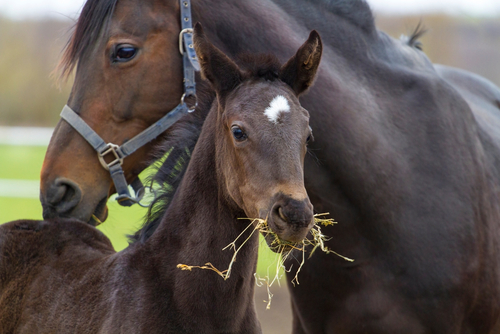
Investigation of clinical predictors of equine umbilical cord torsion and abortion
RVC Researchers are working to unravel the underlying reason umbilical cords twist and novel diagnostic tools that will enable veterinary surgeons to detect and monitor the condition.

Challenge
Equine pregnancies can fail at any point throughout gestation, with different, distinct, abnormalities and causes. One in 25 UK Thoroughbred pregnancies end in abortion (pregnancy loss in mid to late gestation), a figure which has showed no significant improvement over the last 30 years. Consistently the most common cause of abortion in the UK is excessive twisting of the umbilical cord (umbilical cord torsion (UCT)), accounting for nearly half of cases sent to a laboratory. Twisting of the umbilical cord then can lead to blocking of the blood supply and subsequently death of the fetus. With the exception of Australia, the proportion of abortions attributed to UCT is significantly lower in many other regions of the world, most noticeably when comparing to figures from North America, where the cases are around 10-fold less than here in the UK. The reason why certain pregnancies result in long or excessively twisted umbilical cords, and for this dramatic geographic variation in occurrence, is poorly understood.

Solution
Researchers at the RVC are leading a collaboration with colleagues at Cornell University, Rossdales Laboratories and Hagyard Equine Medical Institute to unravel the reason the umbilical cord twists excessively in mid pregnancy and new ways to be able to detect the twisting prior to the pregnancy being aborted. Epidemiological modelling is being utilised to carry out evidence-based refinement of the current diagnostic criteria for UCT, allowing for more reliable comparison of distinct populations within the UK and overseas. This, in turn, will aid in the interpretation of the risk factors for the disease. Characterization of the subcomponents and key proteins of the umbilical cord in normal and diseased cords is being carried out to identify potential regions of the cord that could be monitored clinically. These parameters will then be examined using ultrasonography in mid gestation, to assess the diagnostic potential for mares that are at risk of UCT abortion.
Recent work at the RVC on the contribution of genetic variants to early pregnancy loss in the horse, attributed a diagnosis to over 20% of losses that were previously undiagnosed. To date, little exploration has been carried out on the role of genetic variants in abortion, therefore, as part of this body of work researchers aim to identify specific variants associated with UCT and abortion that can then be used to predict the condition.
Impact
The team is now driving for an international consensus on UCT which will facilitate the accurate diagnosis of the condition by pathologists and veterinarians and allow researchers to identify risk factors to optimise the management of pregnant mares. The development of novel diagnostic tools will enable veterinarians to predict mares at risk of suffering a UCT pregnancy loss and monitor the efficacy of novel treatments for the condition. Ultimately, the findings from this project will push forward our understanding of this frustrating cause of equine pregnancy loss, and abortion more widely.
Partners
Funded by The Alborada Trust
Dr Mandi de Mestre, Baker Institute, Cornell University, NY USA (Project Mentor)
Dr Alastair Foote, Rossdales Laboratories, Newmarket, UK (Collaborator)
Dr Karen Wolfsdorf, Hagyard Equine Medical Institute, KY USA (Collaborator)
Publications
| Title | Publication | Year |
| Incidence and causes of pregnancy loss after Day 70 of gestation in Thoroughbreds. | Equine Veterinary Journal | 2021 |
| Multivariable analysis to determine risk factors associated with abortion in mares. | Reproduction and Fertility | 2022 |
| Lethal variants of equine pregnancy: is it the placenta or foetus leading the conceptus in the wrong direction? | Reproduction, Fertility and Development | 2022 |
| First reported case of fragile foal syndrome type 1 in the Thoroughbred caused by PLOD1 c. 2032G> A. | Equine Veterinary Journal | 2022 |
